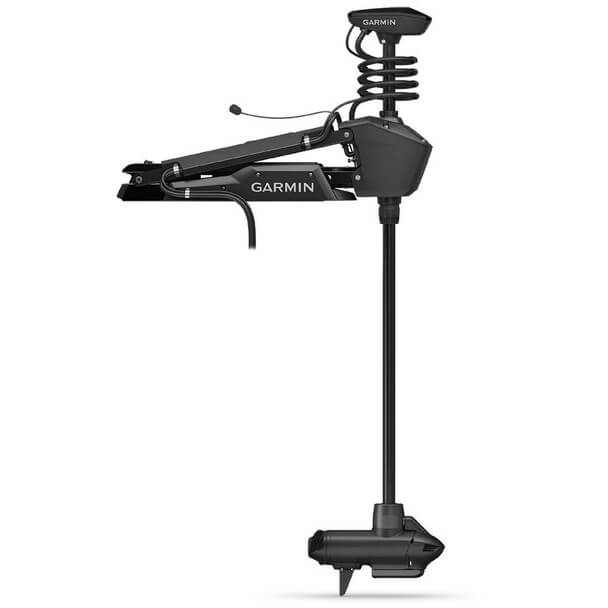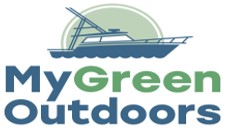Buying Guides & Resources

How to Choose Trolling Motor: Key Factors to Consider Before Buying
If you love fishing and boating, you must buy a good trolling motor. In the US, the global electric trolling market was estimated to be more than $850.8 million by the end of 2034.
Since there are so many different types of motors available, you have to figure out a few key factors before choosing the right one.
So, whether you use it for your dinghy boat propulsion or as an auxiliary propulsion for your sailboats, let’s check out the factors to consider on how to choose a trolling motor!
Understanding Trolling Motors
What is a Trolling Motor?
A trolling motor is a small electric motor mostly used on fishing boats to move the boat or vessel at slow speeds. This lets you maneuver the boat to the right position to catch fish.
Trolling motors reduce boat noise, helping catch fish without scaring them away. It’s typically mounted on the boat’s bow or stern, and the equipment comes with a propeller and batteries.
Types of Trolling Motors
There are three main types of trolling motors in the market, namely:
1. Electric vs. Gas-powered
If you’re planning to use your boat for short trips and recreational purposes, electric trolling motors are a good choice. They are perfect for fishing in quiet lakes and rivers and are battery-powered.
On the other hand, if you plan on fishing for longer periods in bigger-sized boats, then you should go for gas-powered motors. They are better for more turbulent waters where electric motors might not work well.
2. Mounting Options
There are three main mounting options in a typical trolling motor. Bow mounts are a favorite among fishing enthusiasts because they allow more flexibility and maneuvering options. Bow mounts also pull from the front of the boat, which offers a wider range of control options.
A transom mount is the second type of mounting used in smaller fishing boats. They are easier to install and can be operated from the back of the boat.
The third type is the engine mount, which is attached to the cavitation plate on outboard motors. These mounts are used in multi-purpose boats.
Key Factors to Consider Before Buying
1. Motor Power and Thrust
Boat Size and Weight
The boat’s weight is crucial when choosing a trolling motor. The general rule of thumb is that you require at least 2 lbs of thrust for every 100 lbs of fully loaded boat, including people and gear.
Thrust Ratings
When you’re figuring out how to choose a trolling motor, evaluate motor thrust and power. Thrust (measured in pounds) should be sufficient to support the boat’s weight. Moreover, in rough water conditions, you’ll need a trolling motor that gives you better thrust.
Small boats (up to 500 kg) require 18-44 lbs of thrust. Large boats (650 to 1800 kg) need thrust around 65-80 lbs.
2. Battery Compatibility and Life
Battery Types
The three most common types of batteries are Flooded Lead-Acid Batteries, AGM (Absorbed Glass Mat) batteries, and Lithium Iron Phosphate batteries.
Flooded Lead-Acid batteries are a popular choice for deep-cycle batteries in trolling motors. They use lead plates immersed in electrolyte solutions for 2-3 years with proper care.
AGM batteries are a more modern and hassle-free option. They’re sealed and require little to no maintenance. They are also designed to be spill-proof and safe while boating.
Lithium Iron Phosphate batteries are very lightweight and have extended lifespans that provide consistent power outputs. With proper maintenance, they can last up to 10 years.
Operating Time
A 12-volt battery with at least 110 Ah is best suited, according to trolling motor size charts. Higher ampere power helps the motor run longer. When it comes to the battery group size, choose 27 or larger for an efficient trolling motor.
3. Control Options
Wireless vs Wired Controls
The trolling motor’s controller part can either be wireless or can come with wired foot pedals. If you’re tired of rowing in a boat that has multiple wires coming out of the trolling motor, the wireless option is better.
Wired trolling motors cost less and are more efficient if you’re not used to newer trolling motor models.
Advanced Control Features
Modern trolling motors have evolved quite a lot, so if you’re thinking of catching fish more regularly, you might consider features like autopilot or electric steering.
An autopilot in a typical trolling motor keeps the boat floating on a specific route with automatic wind and current corrections. Many can be navigated on autopilot mode through smartphone apps.
On the other hand, electric steering is a better alternative to cable-steered trolling motors. You can control the unit from any part of the boat.
4. Durability and Build Quality
Materials and Construction
Saltwater trolling motors are made of/coated with corrosion-resistant materials that can withstand high-salt concentration areas. Freshwater trolling motors can’t perform well in seas or oceans because they lack any such coating.
Weather and Water Resistance
Many trolling motors have special waterproof features. The control box of the motor is built in a clam-shell design, where the LED meter and the lower half of the motor’s head are protected by a lip that prevents water from entering.
5. Noise Level
Importance for Stealth
Fishing enthusiasts need a quiet trolling motor to prevent scaring their catch with the loud sound of conventional motors. Even if you’re simply boating to observe nature and wildlife around you, loud sounds can drive away all sorts of birds and animals.
Noise Reduction Features
Today’s trolling motors come with RC LPF (Resistor, Capacitor, and Low Pass Filter) to get rid of high-frequency noise. A special capacitor costs about $2, and you can even go for a bipolar capacitor if you want.
6. Installation and Maintenance
Ease of Installation
A typical trolling motor installation set comes with operational control that might be wired or wireless.
Most freshwater motors have a wireless remote control, whereas saltwater ones feature a conventional remote control. You will also receive power leads with a terminal ring battery connector, along with an instruction manual.
Maintenance Requirements
To keep your motor in good condition for a long time, regularly rinse it with water after each use.
If you have a saltwater trolling motor, wash it with fresh water after every 2-3 uses. Remove any debris or weed stuck to the motor body.
When the prop is off, check the prop driver pin to inspect for wear and tear. Lubricate the motor shaft after cleaning and wiping it with a mild soap solution.
7. Budget considerations
Cost vs Features
Higher-priced trolling motors offer additional benefits like GPS tracking and digital displays.
Fixed-speed trolling motors generally cost less and allow you to set the motor speed exactly where you want. However, variable-speed motors come with GPS systems and more precise controls.
In general, more expensive models may also offer better thrust powers.
Long-Term Value
A good trolling motor offers great long-term value if maintained well. They easily get you out of tight spots and let you quickly catch fish without loud noises.
When paired with high-quality lithium batteries, a good motor will definitely be cost-effective in the long run.
Trolling Motor for Fishing
Special Considerations for Fishing
If it’s solely for fishing, choose a trolling motor with quiet operations, so fish don’t flee. It should have precise maneuverability in tight spots. The trolling motor models from My Green Outdoors are perfect, offering affordable models with the latest technological features.
Advanced Features
In addition to speed control, the motors from My Green Outdoors offer built-in sonar technology, GPS compatibility, and battery meters to monitor power usage.
Conclusion
The perfect trolling motor depends on your budget and specific needs. With a little more investment, buy good-quality trolling motors with the latest technological features. So don’t wait any longer, and check out My Green Outdoors today!



